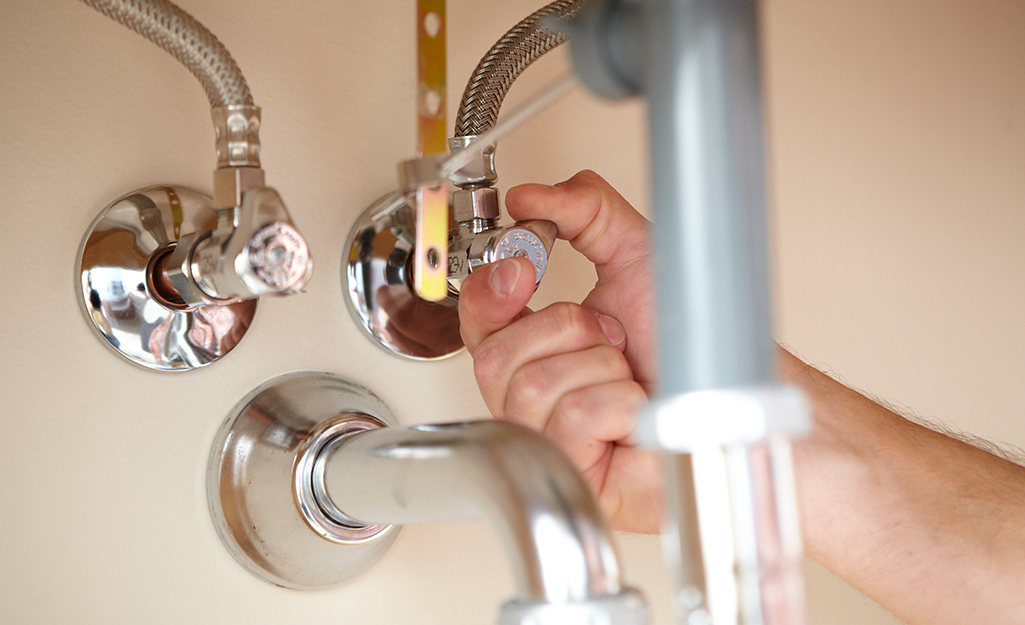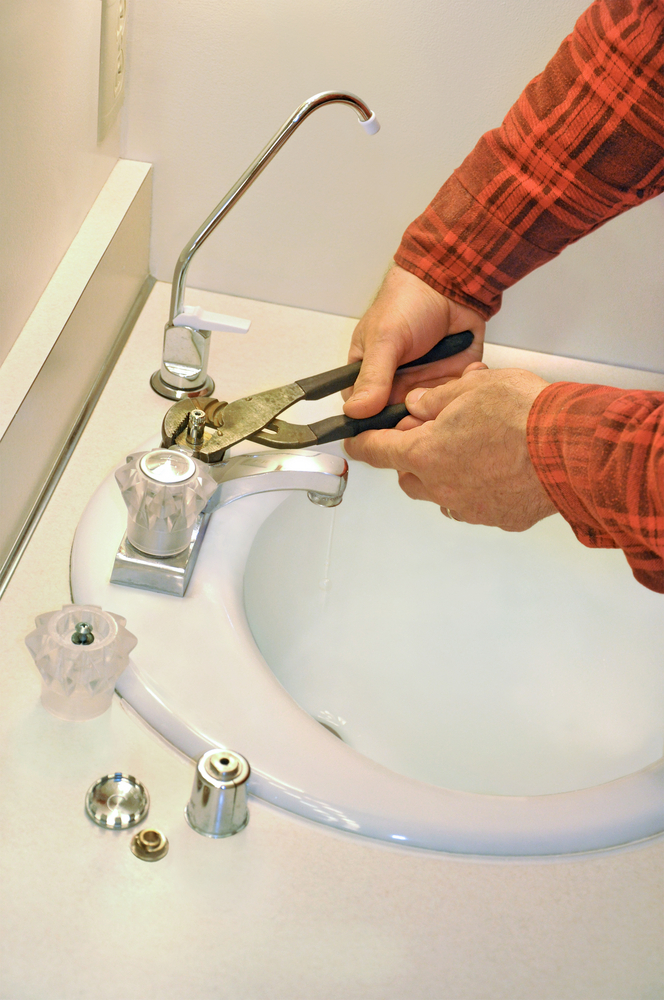When It's Essential to Repair a Malfunctioning Faucet
When It's Essential to Repair a Malfunctioning Faucet
Blog Article
Everybody may have their own individual conception involving Why Is It Important To Fix Your Leaking Tap/Faucet?.

Dripping faucets might appear like a small inconvenience, but their influence surpasses simply the nuisance of the noise. From wasting water to incurring unneeded monetary expenses and health and wellness dangers, disregarding a dripping tap can result in various effects. In this short article, we'll delve into why it's critical to address this usual home problem without delay and successfully.
Wastage of Water
Environmental Influence
Leaking taps contribute substantially to water wastefulness. According to the Environmental Protection Agency (EPA), a solitary tap dripping at one drip per second can throw away more than 3,000 gallons of water per year. This not only pressures water sources but also impacts ecological communities and wild animals based on them.
Financial Expenses
Boosted Water Costs
Past the ecological influence, trickling taps can pump up water expenses substantially. The gathered wastage over time equates right into higher utility expenses, which can have been stayed clear of with prompt repair services.
Prospective Building Damages
Additionally, prolonged trickling can cause harm to components and surfaces bordering the faucet. Water buildup can trigger staining, deterioration, and even architectural issues if left neglected, resulting in added fixing costs.
Wellness Concerns
Mold And Mildew and Mold Growth
The continuous visibility of moisture from a leaking tap creates a suitable atmosphere for mold and mildew and mold growth. These fungi not only jeopardize interior air top quality yet also position health and wellness dangers, especially for individuals with respiratory conditions or allergies.
Waterborne Diseases
Stagnant water in dripping faucets can become a breeding ground for bacteria and various other virus, boosting the danger of waterborne illness. Contaminants such as Legionella bacteria grow in stationary water, potentially resulting in serious ailments when consumed or inhaled.
Do it yourself vs. Expert Repair
Advantages and disadvantages of DIY Fixing
While some may try to repair a trickling faucet themselves, do it yourself repair work feature their own collection of difficulties. Without proper expertise and tools, do it yourself efforts can aggravate the problem or bring about incomplete repair work, lengthening the trouble.
Benefits of Working With a Professional Plumber
Hiring an expert plumber makes sure that the underlying source of the trickling faucet is addressed efficiently. Plumbing technicians have the expertise and equipment to diagnose and repair faucet issues efficiently, conserving time and decreasing the threat of additional damage.
Step-by-Step Guide to Fixing a Dripping Tap
Tools Required
Prior to attempting to deal with a leaking faucet, collect the needed tools, consisting of an adjustable wrench, screwdrivers, substitute components (such as washers or cartridges), and plumber's tape.
Typical Faucet Issues and Their Solutions
Recognize the sort of faucet and the certain issue creating the drip. Common issues consist of worn-out washing machines, corroded valve seats, or damaged O-rings. Refer to maker guidelines or on-line tutorials for detailed support on repair services.
Preventive Measures
Regular Maintenance Tips
To stop trickling faucets, carry out routine upkeep such as cleaning up aerators, examining for leakages, and replacing damaged components quickly. Additionally, take into consideration setting up water-saving tools or updating to more reliable fixtures.
Relevance of Prompt Repair Works
Dealing with dripping faucets as quickly as they're discovered protects against further water wastefulness and possible damages, eventually conserving both water and cash over time.
Influence On Residential Property Value
Assumption of Well-Maintained Residential Or Commercial Property
Keeping a home in good condition, consisting of resolving upkeep concerns like dripping faucets, enhances its perceived value and desirability among prospective customers or occupants.
Impact on Resale Value
Qualities with properly maintained plumbing components, including faucets, command greater resale worths in the realty market. Dealing with trickling faucets can contribute to a favorable perception during residential or commercial property inspections and arrangements.
Environmental Responsibility
Private Contribution to Preservation
Taking responsibility for dealing with leaking faucets straightens with wider initiatives toward water preservation and environmental sustainability. Every individual's activities collectively make a substantial impact on protecting priceless resources.
Lasting Living Practices
By focusing on prompt repair services and taking on water-saving habits, individuals add to lasting living techniques that benefit both present and future generations.
Final thought
Resolving a dripping faucet goes beyond mere benefit; it's a necessary action towards saving water, minimizing monetary expenses, and securing health and wellness and residential property. Whether via do it yourself fixings or specialist help, acting to fix trickling taps is a little yet impactful way to advertise accountable stewardship of resources and add to a healthier, more sustainable future.
How to Fix a Dripping or Leaky Faucet
A leaking faucet is one of the most common problems that homeowners encounter, but it being commonplace doesn’t make it any less annoying. The constant drip drip drip of a leaking bathtub faucet, showerhead, or sink tap can disturb your home’s serenity. Left neglected, a dripping faucet can also result in higher water bills and discoloration or mold growth in your sink or plumbing fixtures.
Fortunately, you don’t have to be a trained plumber to know how to stop a dripping faucet. With some basic tools, replacement parts, and a little patience, leaky faucet repair is a breeze. In this article, we’ll explain what causes dripping faucets and how you can fix them.
What Causes a Leaking Faucet?
Kitchen and bathroom faucets come in all manner of designs, but most involve some combination of valves, O-rings, seals, and washers. The O-ring is usually the weakest link, but any one of these pieces can wear down over time. Heat, moisture, temperature fluctuations, minerals, mold, and movement can contribute to warping and corrosion, breaking the watertight seal. This just comes with the territory of being a homeowner. Everything is always subject to wear and tear, and some component parts of your appliances and fixtures need to be replaced on occasion. At least replacement O-rings are cheap!
More rarely, dripping faucets can be a symptom of excessively high water pressure. Were this the case in your home, you would probably notice that the leak is not isolated to one faucet. Water pressure issues are harder to resolve on your own. We recommend contacting a professional plumber if you suspect your water pressure is too high.
How to Fix a Dripping Faucet
Pipe wrench or monkey wrench Allen wrench set Screwdrivers Old towel or rag Shut off the water.
Before you do anything, you need to turn off the water to keep from drenching your kitchen or bathroom. You should find a valve under the sink and against the wall. Once you’ve turned this valve, try turning the faucet on to confirm that the water source has been cut off.
If you can’t locate your local valve for the faucet you’re working on, you can always shut off the water to the house at the main valve. Of course, this will prohibit anyone from using the sinks, showers, or toilets while you’re working on the faucet that’s giving you trouble.
Plug or block the drain.
You’ll be disassembling the faucet and removing some small bits of hardware. Plug the drain with a stopper or rag to avoid the possibility of a small screw falling into your P-trap.
Take apart the faucet assembly.
There are several varieties of kitchen and bathroom faucets, each with its own manner of assembly. For detailed instructions on how to disassemble your faucet, you can refer to the fixture’s manual or contact the manufacturer. If you know whether you have a ball, disc, cartridge, or compression faucet, you can find detailed schematics online.
In general, you need to begin by removing the faucet handles. You might notice a small screw that you’ll need to remove with a screwdriver or Allen wrench. If you don’t see any visible securing hardware, it’s likely hidden under a decorative cap that can be unscrewed or popped off with flathead screwdriver.
Remove each piece methodically, consulting a schematic when necessary. Take notes or arrange the pieces in such a way to make it easier to correctly reassemble the faucet later.
Remove the cartridge.
Once you’ve removed the handles and securing hardware, you should be able to remove the valve cartridge or stem. Some cartridges will slide right out. Other faucet models will require you to loosen a nut with a pipe wrench before you can remove the valve stem.
Examine the exposed hardware.
With the cartridge or stem removed, inspect the component parts. Check the rubber O-rings for wear and tear. Also examine the seat washer for corrosion or other damage. These pieces are usually the responsible parties for a dripping faucet, but it’s worth inspecting the other component parts while you have the faucet disassembled.
Find replacement parts.
Once you’ve identified which faucet component has failed, find an identical replacement. Your local hardware store should have O-rings, seat washers, and other standard components in stock. If you have a luxury or uncommon faucet, you may have to contact the manufacturer for a replacement part.
It’s a good idea to take your old parts with you to the hardware store so you can compare them with the store’s inventory and be sure you’re purchasing the correct replacement.
Reassemble the faucet.
With your new parts in hand, reconstruct the faucet and handles. Don’t be tempted to overtighten screws or nuts. You might think this could create a better seal, but it can instead damage or bend a delicate part of the assembly and create a new problem for you.
Turn on the water and test the faucet.
The only thing left to do is test your work. Unplug the sink, turn the water back on, and try the faucet. Congratulate yourself on a job well done!
https://www.libertyhomeguard.com/how-to-fix-a-dripping-or-leaky-faucet/

I recently found that content about while scouting around the web. Be sure to set aside a second to promote this page if you enjoyed it. I take joy in reading our article about 4 Common Reasons for a Leaky Faucet.
Report this page